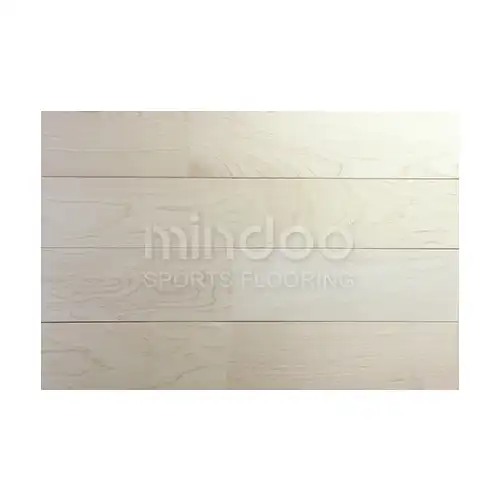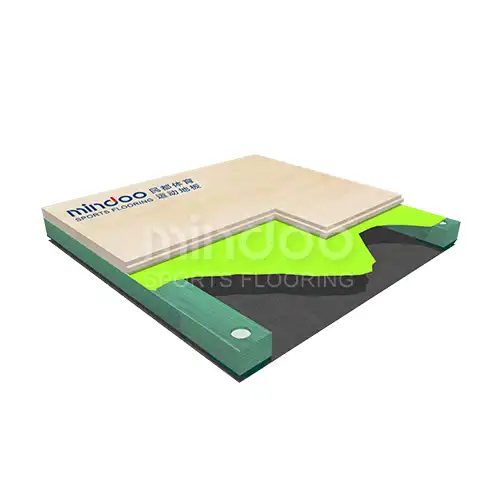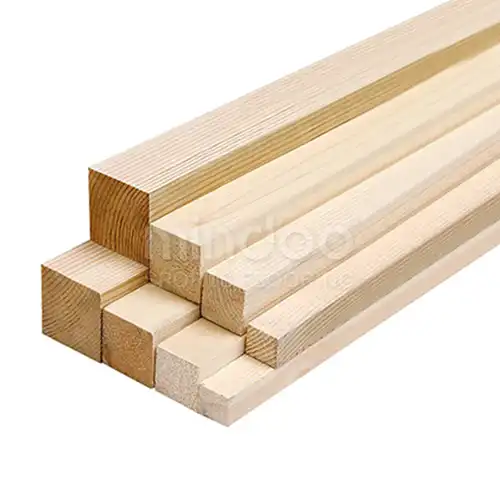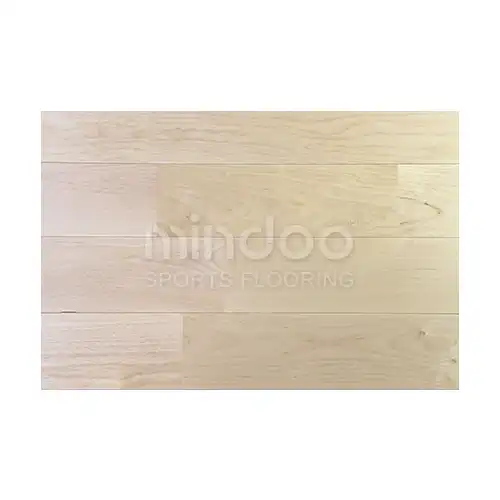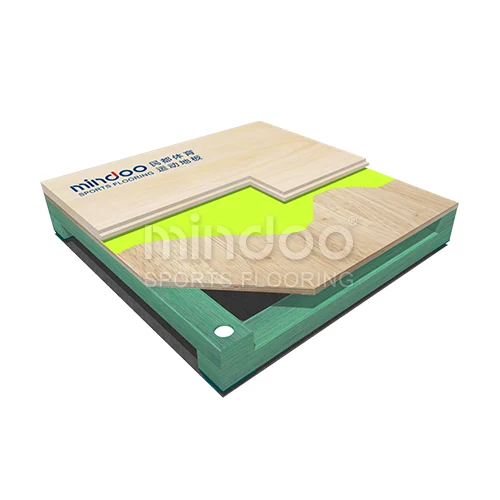Sports Hardwood Flooring Installation Methods: Choosing the Best Solution for Your Venue
Sports hardwood flooring is an essential component of modern sports venues, and it must not only perform well but also meet the needs of athletes by ensuring safety, comfort, and durability. Choosing the right installation method is crucial to the long-term performance of the flooring. The method you choose not only affects the floor's stability and elasticity but also impacts the safety of athletes and the ongoing maintenance of the venue.
1. Floating Installation: A Simple and Flexible Option
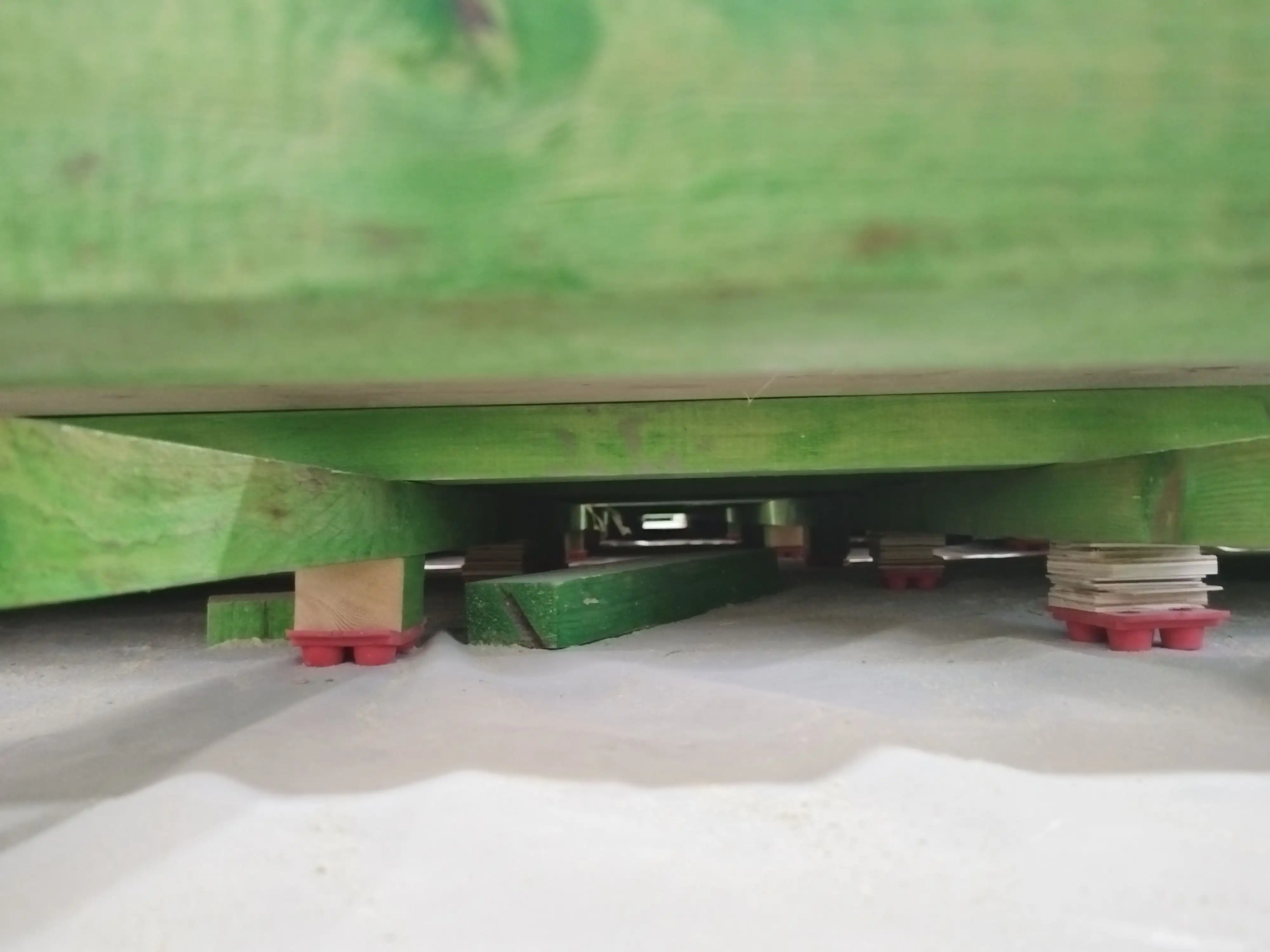
As the name suggests, floating installation means that the flooring does not directly adhere to the subfloor but is suspended above it via a system of battens or joists. This installation method is widely used in sports venues such as basketball courts and badminton halls, where some level of elasticity and shock absorption is required. Since the floor is not in direct contact with the subfloor, it helps absorb the force of impacts, making it more comfortable for athletes.
Advantages:
Simple Installation: Floating installation does not require direct bonding to the subfloor, making the installation process faster and easier. It is especially suitable for venues that require quick turnaround times or temporary installations.
Excellent Elasticity and Shock Absorption: The suspended floor provides additional elasticity, which helps reduce the pressure on athletes' joints and knees, lowering the risk of injuries.
Highly Adaptable: This method can be used on various types of subfloors and is ideal for environments with fluctuating humidity or temperature.
Disadvantages:
Less Stability: While floating installation is convenient in the short term, if the substructure (e.g., battens or joists) is not properly installed, the floor may become unstable over time, leading to potential movement or looseness.
2. Fixed Installation: A Classic Method for Stability and Durability
Fixed installation involves attaching the floor directly to the subfloor, typically using adhesives or nails. This method is widely used in venues where high stability is required, such as professional basketball courts, dance studios, and multi-purpose sports halls. By securely fixing the floor to the subfloor, this method reduces movement and ensures long-lasting durability.
Advantages:
High Stability: Fixed installation ensures that the floor is firmly attached to the subfloor, making it ideal for high-intensity sports venues where stability is essential.
Durability: Because the floor is securely fixed, it is less likely to loosen or warp over time, making it suitable for venues with high traffic or long-term use.
Disadvantages:
Longer Installation Time: Compared to floating installation, fixed installation requires more time, especially when the subfloor needs to be prepared beforehand.
Less Flexibility for Adjustments: Once installed, the floor is difficult to modify or replace. This method is less suitable for venues where layout changes or upgrades are frequent.
3. Combination of Fixed and Floating Installation: A Balance of Stability and Flexibility
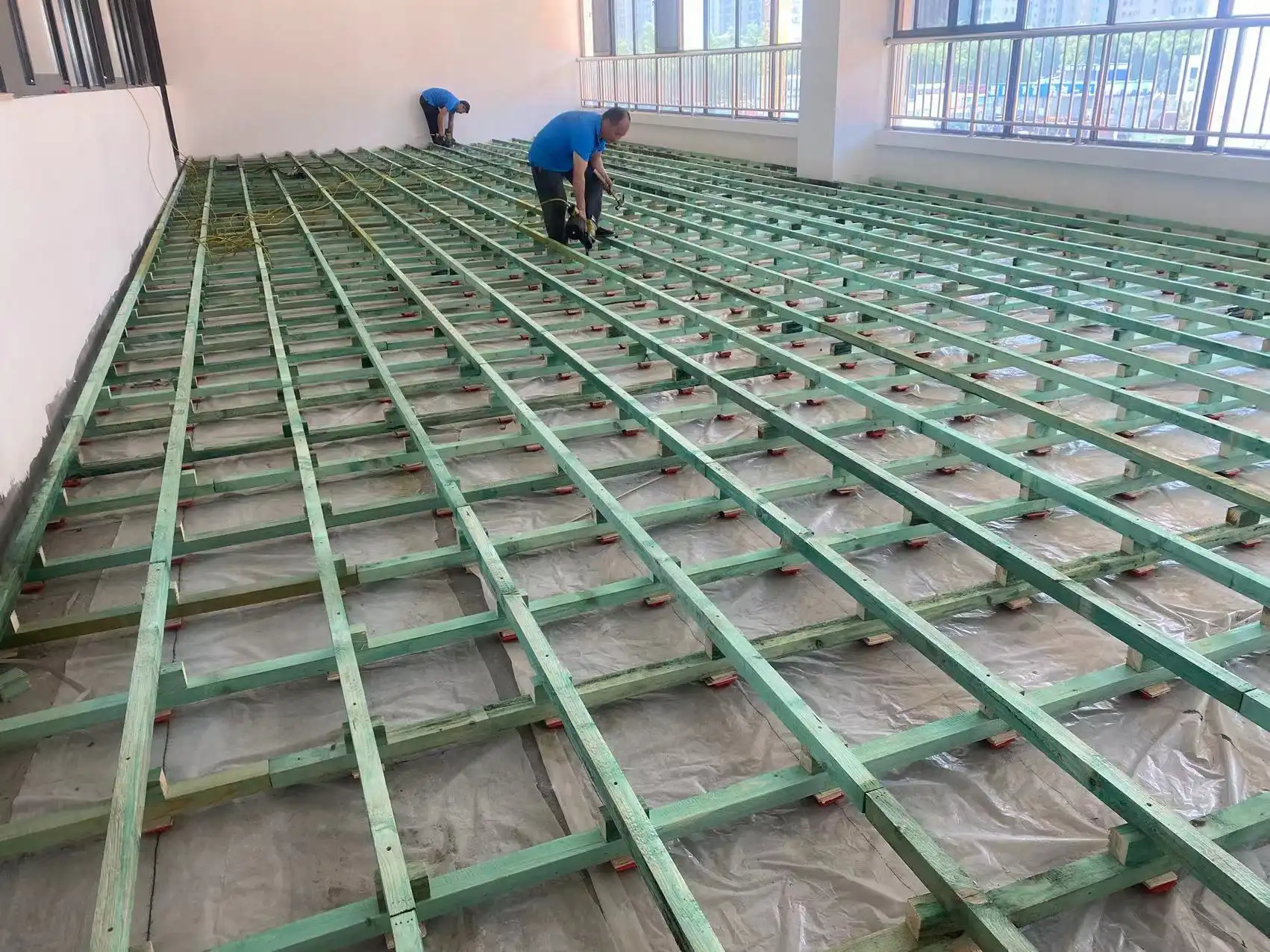
The combination of fixed and floating installation is currently one of the most common methods used in sports hardwood flooring installations. It integrates the advantages of both fixed and floating installations, providing a balance of floor stability and some level of elasticity. This method is especially popular in basketball courts, badminton halls, and other professional sports venues.
Advantages:
Balance of Stability and Elasticity: By combining floating substructures with partial fixed attachment, this method offers a good balance of stability and comfort, ensuring a better experience for athletes.
Versatility: This method works well in a wide range of venues, from high-traffic areas to those requiring a certain level of shock absorption.
Disadvantages:
More Complex Installation: This installation method requires more skilled labor and expertise due to its complexity, which may lengthen the installation time.
Higher Cost: The combination of systems often results in higher material and labor costs, making it better suited for higher-budget or higher-performance venues.
4. Glue-Down Installation: Ideal for Specific Venue Requirements
Glue-down installation involves adhering the floor directly to the subfloor using high-strength adhesive. This method is often used in venues where smoothness and flatness are a top priority, such as dance studios and fitness centers. Glue-down installation creates a very smooth surface, making it ideal for certain types of sports and physical activities.
Advantages:
High Surface Flatness: Glue-down installation can effectively eliminate any imperfections or gaps in the subfloor, providing a smooth and even surface that is ideal for certain sports activities.
Good Shock Absorption: Compared to floating floors, glue-down installations tend to provide better stability and resistance to movement.
Disadvantages:
Reduced Elasticity: Because the floor is permanently bonded to the subfloor, it may lose some of its elasticity and shock absorption, which could be problematic for sports that require higher levels of cushioning.
More Complex Installation: Glue-down installation requires careful handling and precise application of adhesive, as improper installation could lead to unevenness or premature wear of the floor.
Choose the Best Installation Method to Ensure Functionality and Durability
When selecting an installation method for sports hardwood flooring, it's important to consider factors such as the frequency of use, the type of sport, the desired performance characteristics of the floor, and the long-term maintenance requirements. Floating installation is ideal for flexible or temporary setups, while fixed installation is best for venues that require high durability and stability. The combination of fixed and floating systems offers the best of both worlds, making it the go-to choice for high-performance venues. Glue-down installation is more suited to environments that demand an ultra-smooth and level surface.
Understanding the pros and cons of each installation method will help you make an informed decision. Whether you are designing a new venue or renovating an existing one, selecting the appropriate installation method ensures the floor will provide top-tier performance and longevity. It is also advisable to work with professional flooring suppliers and installation teams to ensure that the installation is done to the highest standard, delivering the best possible results for athletes and users alike.
